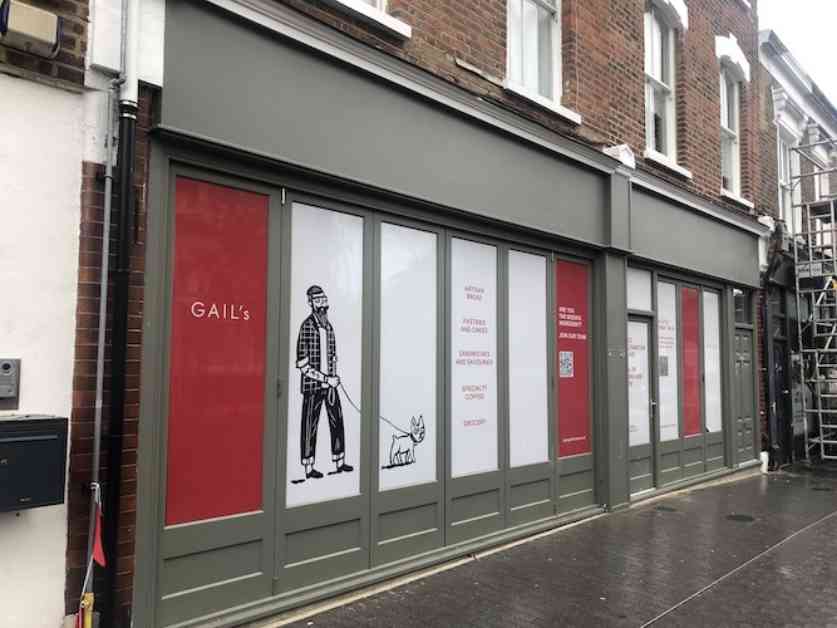Dave Hill: Unraveling the Complexities Surrounding Gail’s Bakery and Urban Villages in London
As a journalist in London, I have come across my fair share of controversies and protests, but the hullabaloo surrounding the arrival of a branch of Gail’s in Walthamstow Village takes the cake, quite literally. The petition to prevent Gail’s from establishing a store in the neighborhood has sparked a debate touching on a myriad of issues, from gentrification to cultural preservation and even international politics.
Protest Politics in Action
The petition, initiated by James Harvey, highlights the concerns of residents who fear that the arrival of a Gail’s branch will overshadow local, independent businesses that are cherished for their unique character and contributions to the community. Harvey’s argument emphasizes the importance of supporting local businesses that reinvest revenue back into the local economy, enriching the entire community.
However, the opposition to Gail’s goes beyond concerns about gentrification and the impact on local businesses. Some petition signatories have drawn a controversial link between Gail’s and Israel due to its Israeli origins and subsequent ownership changes. The association with Israel’s military actions in Gaza has fueled additional animosity towards the bakery chain, with some residents expressing disdain for what they perceive as support for Israel through Gail’s ownership structure.
Navigating the Controversies
The history of Gail’s, from its humble beginnings in Hampstead to its acquisition by Bain Capital Credit, has been scrutinized by those opposed to its presence in Walthamstow Village. The ties to Israel, highlighted by Luke Johnson’s admiration for the country’s innovation and Bain Capital’s statement of support following the Gaza conflict, have further fueled the controversy surrounding Gail’s.
The intersection of local politics, global issues, and consumer preferences have created a complex web of opposition to Gail’s, with some residents expressing a deep-seated aversion to the bakery chain based on ideological grounds. The confluence of protests against gentrification, disdain for chains, and political affiliations has amplified the resistance to Gail’s, turning a local bakery dispute into a multifaceted cultural and political battleground.
Exploring Economic Impact
The debate over the economic impact of local businesses versus larger chains has added another layer of complexity to the Gail’s controversy. The argument that independent retailers keep more wealth in the community has been challenged, with questions raised about where the profits of local businesses ultimately end up. The notion that spending at local shops benefits the local economy to a greater extent than patronizing larger corporations has been scrutinized, highlighting the need for a nuanced understanding of economic dynamics at the local level.
The Fear Factor
As Gail’s prepares to open its doors in Walthamstow Village, the tension surrounding its arrival continues to simmer. The vinyls on the shop’s windows signal the bakery chain’s imminent presence, prompting mixed reactions from residents and local authorities. The fear of losing the character of the neighborhood, the impact on local businesses, and the broader implications of supporting a chain establishment have heightened emotions and polarized opinions within the community.
Moving Forward
The Gail’s controversy in Walthamstow Village serves as a microcosm of larger social, political, and economic dynamics at play in modern cities. The intersection of protest politics, cultural preservation, and economic interests underscores the complexities of urban development and community identity. As the debate rages on, it is essential to consider the diverse perspectives and underlying motivations driving the opposition to Gail’s and reflect on the broader implications for urban villages in London and beyond.
In conclusion, the Gail’s saga in Walthamstow Village offers valuable insights into the intricate interplay of local activism, global connections, and economic considerations shaping our cities. By delving into the nuances of this controversy, we can gain a deeper understanding of the forces at play in urban development and community relations. As London grapples with the challenges of gentrification, cultural preservation, and political polarization, the case of Gail’s serves as a compelling lens through which to examine the evolving landscape of our modern cities.





















